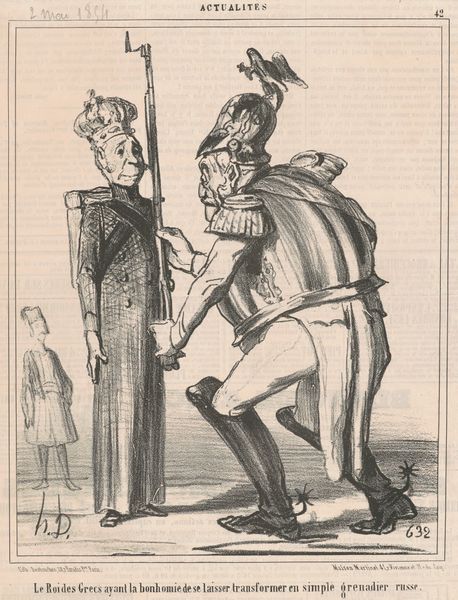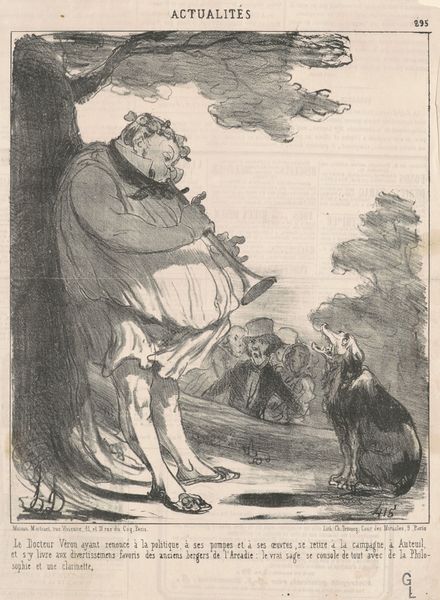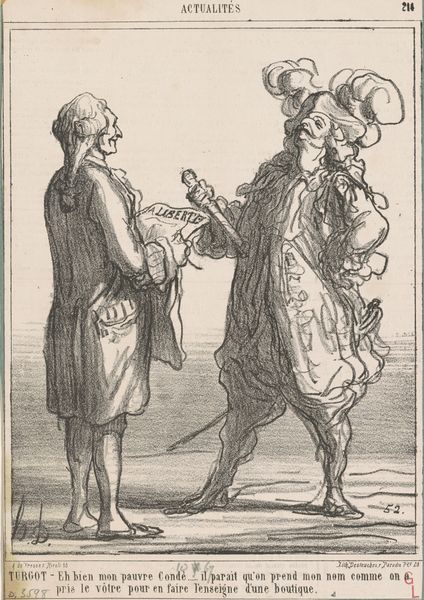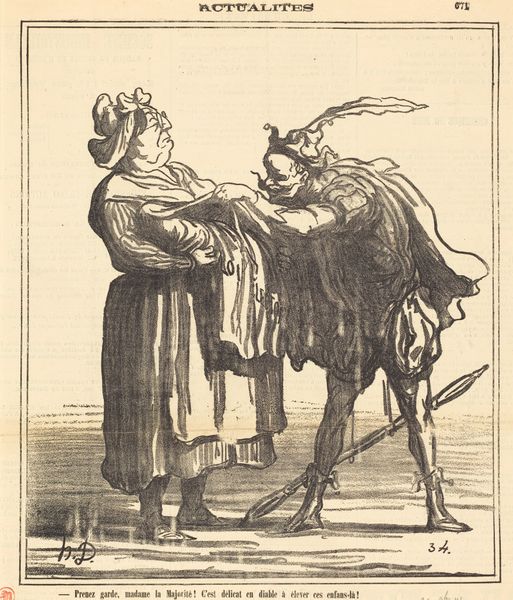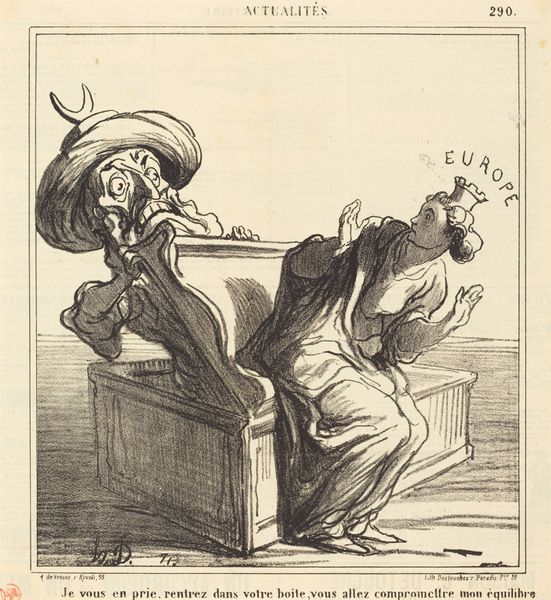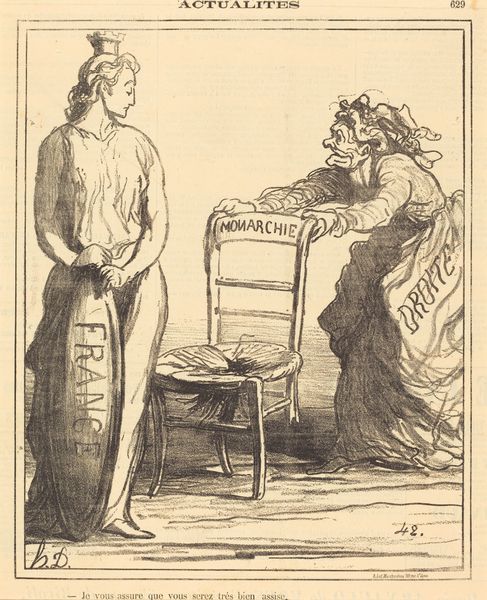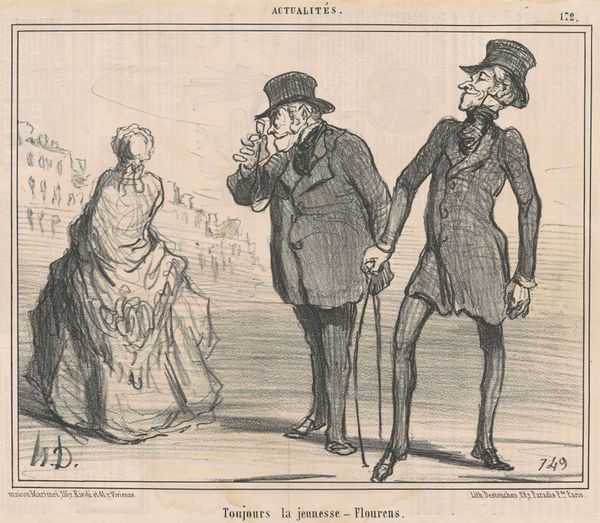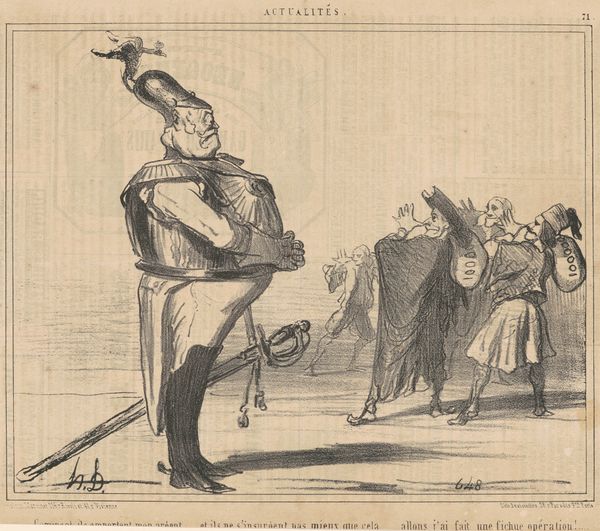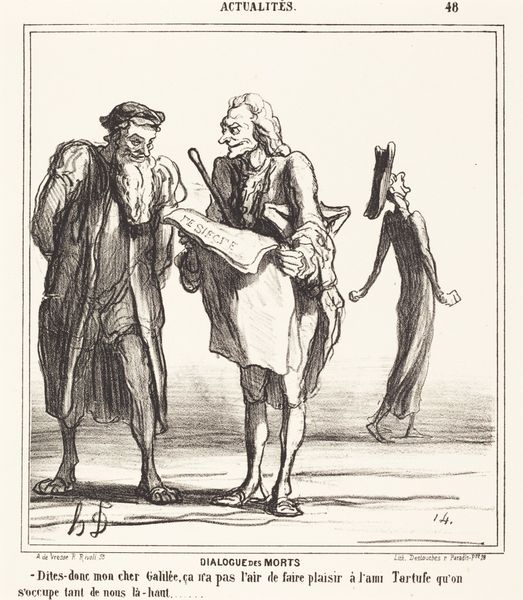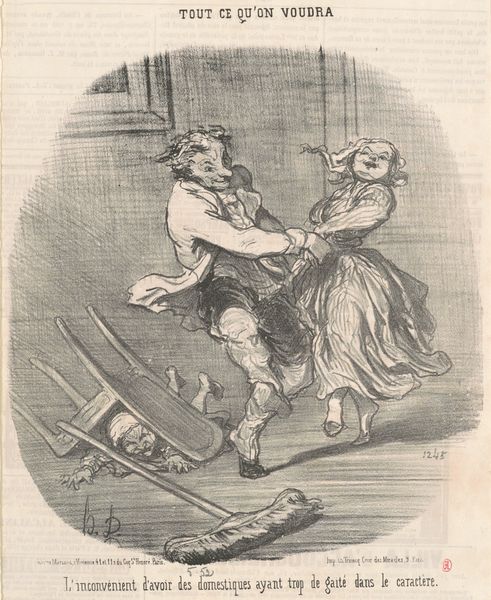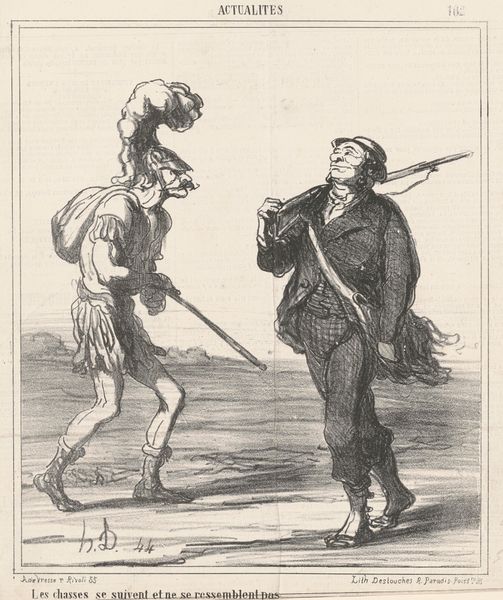
lithograph, print
#
lithograph
# print
#
caricature
#
romanticism
#
genre-painting
Copyright: National Gallery of Art: CC0 1.0
Curator: Honoré Daumier's lithograph, "Pauvre vieux," roughly from the 19th century, really jumps out, doesn't it? What are your initial thoughts? Editor: It feels brittle, visually. The thin lines, the frail figures… there's a definite sense of fragility, almost as if the paper itself might crumble. The stark contrast adds to this feeling. Curator: The medium itself is key, I think. As a print made for mass consumption, it directly engages with the political and social landscape. The exaggerated caricature isn't just aesthetic, it's a tool of critique targeting, in this instance, power structures and political figures. Editor: Agreed, but look at the composition! The towering, almost skeletal figure supported by crutches—the implied diagonal tension. Then there's the contrasting curved form of the bending figure… It creates a striking, if unbalanced, visual rhythm. What's the word “Conference” doing above her? Curator: The figures probably allude to nations dependent on peace conferences, with this European conference seeming to offer less and less real assistance or stability. "Poor old man", that's who this fragile nation, or perhaps ideal, is becoming! And don't forget the social context, this was made during a time of immense socio-political shift and turmoil in Europe. This sort of art was a direct intervention. The mode of distribution influences meaning! Editor: I appreciate the context, but focusing on the lines—they're scratchy, agitated. The overall grayscale is vital here. Daumier masterfully wields value to convey texture and, yes, a mood of impending decay. How do these lines help reinforce this? Curator: The frantic mark-making emphasizes anxiety, economic uncertainty. It visually embodies social realities. The fact this was a medium intended for the press changes everything, as it democratizes not just the consumption of art, but political interpretation. Editor: Indeed, an analysis which deepens the artwork’s reading in conjunction with visual impact and context. Both inform each other and are not mutually exclusive. It all has value in contributing to our understanding. Curator: Absolutely. Thinking about the mode of reproduction—the ability to reproduce these critiques and disseminate them widely is incredibly valuable to the moment.
Comments
No comments
Be the first to comment and join the conversation on the ultimate creative platform.
